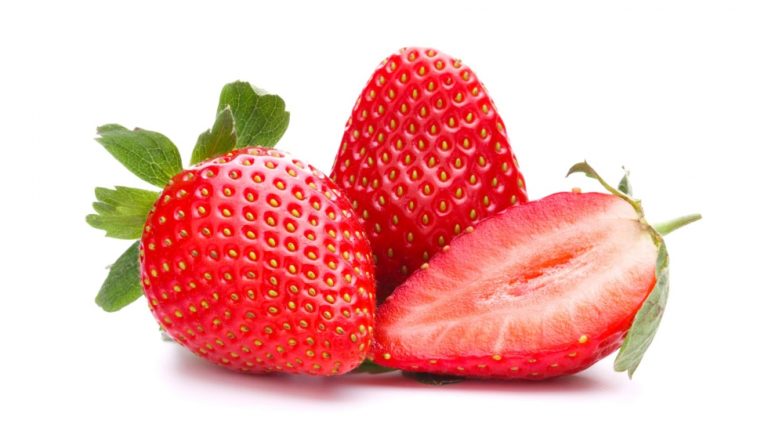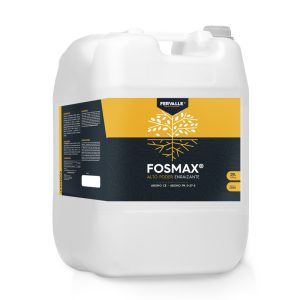CULTIVATION STRATEGY FOR

Strawberry cultivation.
The strawberry is a fruit belonging to the Rosaceae family, as are fruit trees such as apple, pear, peach, plum and cherry trees.
It is one of the most prized fruits by consumers, due to its characteristic sweet-acidic taste, its attractive colour and its nutritional properties. They are a source of vitamin C, A and E, as well as providing minerals such as potassium, iron, phosphorus and magnesium.
-

FOSMAX®
fosmax, Powerful Rescuer, Rooting
» Strawberry plantation
·When are strawberries planted?
Generally, the best time to plant strawberries is from November to March, i.e. in late winter and during spring.
However, the time of planting will depend on the area and the variety of fruit:
- Short-day variety: late summer to early autumn.
- Long-day variety: early summer.
·How are strawberries planted?
It is advisable to plant strawberries from stolons, i.e. the shoots or side shoots that grow from the lower part of the main stem of certain plants.
They are sown at a distance of 25-30 cm between plants and about 40 cm between rows.
If sowing is carried out from seed, it must be taken into account that:
- 2-3 seeds are placed in the seedbed.
- Irrigating with plenty of water
- When the seedlings have 2-3 leaves, they are transplanted into a larger pot.
- When they reach about 8 cm, they are transplanted to their final place.
After planting, several waterings are recommended for optimal rooting.
Edaphoclimatic requirements
·Soil
Strawberry crops prefer well-drained, deep, sandy loamy loam soils rich in organic matter. The pH should preferably be neutral or slightly acidic and they do not tolerate salinity well.
·Climate
Strawberries prefer temperate, sunny, frost-free and windy climates. However, they can adapt well to any location as they tolerate climatic variations and low temperatures. The optimum temperature for this crop is between 15-20oC.
In addition, strawberries need to accumulate a number of chilling hours that vary according to the variety and require about 12 hours of light per day.
» Care requirements for strawberries
·Soil preparation for strawberry cultivation
Soil preparation for strawberry cultivation includes:
- Undercutting to a depth of about 50 cm.
- Application of organic matter
- Soil disinfection
- Ridge padding
- Installation of irrigation systems
·Watering strawberries
Strawberries require constant watering, but not waterlogging. This crop is quite sensitive to humidity. Drip irrigationis the most recommended method, as it allows water to be filtered directly to the roots.
As for the frequency of watering, it is advisable to water every three days for the first two weeks and every two days thereafter. Watering for 30-45 minutes is sufficient.
·Tunneling or macro-tunneling
Sometimes, in order to achieve an early harvest, protection systems such as tunnels/microtunnels (covering one ridge) or macrotunnels (covering 7 to 9 ridges) are installed 45 days after planting.
·Pruning
It is important to prune strawberry crops to prevent the proliferation of pests and to invigorate the plants. Annual pruning is recommended, where diseased leaves and the first flowers that appear are removed, as this strengthens the following ones.
» Nutrients needed for strawberry cultivation
Strawberry crops mainly require applications of nitrogen, phosphorus, potassium, magnesium, calcium and zinc, among others.
- Nitrogen: It’s essential for vegetative growth, flowering and fruiting.
- Phosphorus: involved in energy transfer and is part of nucleic acids. It is also important for root growth, flowering and the formation of shoots and seeds.
- Potassium: It increases the efficiency of water consumption, participates in the flow and translocation of sugars, fruit fattening, improvement of taste and fruit quality and disease resistance.
- Magnesium: It’s part of the chlorophyll molecule and is an enzyme activator.
- Calcium: essential for the integrity of the cell membrane and cell wall. It is also involved in pollen growth and germination, cell division and elongation.
- Zinc: It regulates plant growth, as it is a precursor of auxins. It is also involved in the synthesis of nucleic acids and proteins.
Strawberry fertiliser
- What fertilisers do strawberries need for their cultivation?
As we have already seen in the previous section, the main components that a strawberry fertiliser should contain are nitrogen, phosphorus, potassium, magnesium, calcium and zinc.
For the organic cultivation of strawberries, organic fertilisers, such as manure, compost or worm hummus, as well as those formulated with algae, minerals or other natural elements, shall be applied.
One of Fervalle’s most recommended fertilisers for strawberry cultivation is Fosmax.
Fosmax is a fertiliser with a formulation based on the presence of the polymeric complex (FPC) together with low molecular weight complexed phosphorus, potassium, calcium and micronutrients. The main advantages and benefits of this product are as follows:
- It enables rapid assimilation of nutrients
- It provides high nutritional bioavailability
- It promotes the development of a strong root apparatus
- It improves flowering on the plant
- It improves fruit set and fruit ripening
Another product recommended for strawberry crops by Fervalle is Manux, a polymeric liquid solution that increases water retention. Therefore, its benefits are:
- It improves water and nutrient absorption
- It improves soil structure
- It prevents leaks
- It increases root bulb volume
» Strawberry picking
Although it depends on the variety planted, strawberries can generally be harvested after 10 months of cultivation.
They are harvested by hand when their typical colour covers more than half of the surface of the fruit, normally from late spring to autumn.




